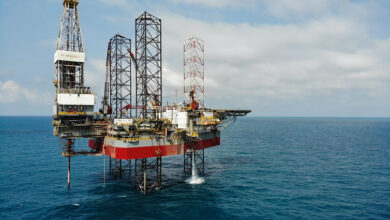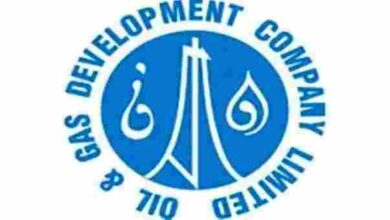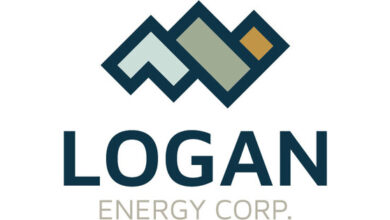Friction reducers, larger-OD tubing, selective perforation enhance coiled-tubing capabilities, applications
By Joanne Liou, associate editor
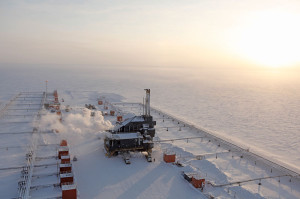
From vertical wells to horizontal wells, the industry’s evolution within the past 10 years has commanded a transformation of the drilling landscape. Subsequently, coiled tubing, once assigned to mostly brownfield work with cleanouts and nitrogen lifts, has expanded its breadth of applications. “As fracking evolved and horizontal drilling evolved, coiled tubing evolved with it. We’ve gone from being the predominate business side of a brownfield service to being the final piece for well production,” Charlie Proulx, VP of Coil Services – North America at Xtreme Drilling and Coil Services, said.
Longer wells also have pushed extended-reach requirements for coiled tubing, trending toward larger-diameter tubing to accommodate greater mechanical drag forces. Particularly in the North American unconventional market, industry has increasingly turned to coiled-tubing services to mill and clean out horizontal wells after multistage fracturing operations. “Five years ago, if you had to go more than 15,000 or 16,000 ft, it was unusual,” Don McClatchie, Engineering Advisor – Corporate Coiled Tubing at Sanjel Corp, said. “Today, we’re being asked to go to 21,000 and 22,000 ft measured depth on a daily basis. It’s changed not only the coiled-tubing equipment but the way we design the strings, the way we look at how you reach that far to the way we design the fluids we pump.”
In drilling applications as well, coiled tubing continues to progress. ConocoPhillips Alaska, for example, has been operating a custom-built coiled-tubing drilling (CTD) rig to sidetrack existing wells since 2009. By combining CTD with managed pressure drilling (MPD), the operator has been able to go longer in unstable shales. “We’re drilling longer and longer horizontals to reach targets that are farther away from the parent wellbore,” Lamar Gantt, CTD Engineering Supervisor for ConocoPhillips, said.
In terms of numbers, demand for coiled tubing continues to rise, particularly in North America. In South Texas alone, Xtreme Drilling saw demand for its coiled-tubing services nearly double from 5 million downward-running ft in 2012 to more than 9 million downward-running ft in 2013. Outside North America, although the uptake of unconventional E&P has been slow, coiled tubing maintains a stronghold in well intervention applications, primarily in post-frac plug removal, while stimulation jobs, scale removal, clean-out and production logging complete the mix. The worldwide coiled-tubing unit count increased by more than 10% to 2,002 units in 2013, according to the Intervention Coiled Tubing Association.
Lengthening laterals

The trend to drill highly deviated, horizontal and, in many areas, extended-reach wells has pushed demand for coiled tubing to new heights. Coiled tubing offers a unique feature to push and pull into the horizontal section of those extended-reach wells with less aid required compared with slickline and wireline, Teoman Altinkopru, VP, Well Intervention, Marketing & Technology for Schlumberger, said.
While the industry norm once stood at five or six frac stages in a horizontal well, the number has increased to 40 stages or beyond in places like Canada, the US and the Middle East. “As oil companies try to get more out of each wellbore, they have to be able to clean out and keep these wells producing,” Mr McClatchie said. “That means coiled tubing has to reach out to that 40th frac stage.”
Longer and heavier coiled tubing also is forcing the industry to look at alternative designs, including optimizing tapered strings. “You have essentially the bare minimum wall thickness the whole way along the string to get the job done and still be light enough to be legally moved down the road. That’s driven the coiled-tubing manufacturers to look at higher-strength materials,” Mr McClatchie said. “Coiled tubing used to be 80,000-psi yield-strength steel. Then it jumped to 90,000 to 100,000, and now there are new products that go up to 130,000-psi steel.” However, there are concerns around the compatibility of these stronger metallurgies with sour-well environments. “If you have any H2S in a well, those higher-strength materials are more susceptible to cracking in a sour environment. That’s a limitation.”
Coiled-tubing drilling applications
Within the past two years, ConocoPhillips Alaska has pushed the depth limits of coiled-tubing drilling by combining it with MPD. This method has allowed the operator to go beyond the average 2,000-ft horizontal section to reach approximately 4,300 ft, according to Jason Burke, CTD Engineer for ConocoPhillips.

In Alaska’s North Slope, the operator has used CTD since 2009 in the Kuparuk Field. ConocoPhillips is operating a custom-built CTD rig, Nabors Alaska CDR2, to drill multilateral horizontal wells using 2-in. outer diameter (OD) coiled tubing. In conjunction with Nabors Alaska, Conoco’s CTD team designed the rig for Kuparuk’s geological demands, as well as its remote location. “This is a highly faulted area with varying pressure regimes between fault blocks,” Mr Burke said. “We also have unstable shale zones where we use techniques, such as managed pressure drilling, to help us mitigate the unstable shales when completing our targets.”
Additionally, by optimizing fluid hydraulics and directional drilling plans, ConocoPhillips is maximizing weight on bit to allow longer reach in CTD operations. “We’ve been pushing ourselves to reach these target depths, and we’ve been using a pressure management system to make sure that we have the capability to drill these wells in a way that mitigates potential pressure issues,” Mr Burke explained. “The main challenge we have has to do with the ability to transfer weight to the bit, as well as managing the equivalent circulating density (ECD) for wellbore stability.”
To maximize weight on bit, the team must manage ECD, which is dictated by fluid properties and hole size in conjunction with the annular pressure profile while drilling. “We optimize our trajectory and our planning in the initial stages so that we maximize our weight transfer to bit further and further from the parent wellbore,” Mr Burke said. “There are a lot of decisions and challenges that are addressed before the rig makes it to location.” The CDR2 drilled approximately 108,000 ft of open hole in 2013. To date, ConocoPhillips Alaska has drilled more than 100 CTD sidetrack wells at Kuparuk, totaling approximately 600,000 ft of open hole.
CTD has also become a tailored and economical solution in Saudi Arabia, where Xtreme has been operating since 2010. The company has two XSR 200 Plus CTD units working for Saudi Aramco on gas fields in the southern part of the country. The fields in that region are unique in that the reservoir allows for re-entry underbalanced CTD, Mr Proulx explained. “By re-entering already existing wells in an underbalanced state, Aramco is able to drill laterally into the reservoir and then produce through the existing wellbore. In doing this, they potentially pay more upfront to do the coiled-tubing drilling. However, it saves them from having to drill an entirely new wellbore and avoid a costly frac,” he said. Drilling that payzone underbalanced also minimizes formation damage and allows the rock to produce without being fractured. “The wells there pay themselves out very quickly, whereas in the US, because of the shale, it has to be fracked.”
The XSR 200 Plus units in Saudi Arabia feature electronic injector heads and can mobilize up to 50% faster than traditional drilling rigs, using modular transportation systems. The units are performing re-entry work using the electronic injector head and the programmable logic controller to resolve casing exit challenges. Two of the existing XDR 300 rigs, which have 300,000-lb hookload ratings, will be transferred from the US Rockies region into India later this year.
“Historically, a couple of different bit runs would be necessary to successfully perform the casing exit,” Mr Proulx explained. “With Xtreme’s programmable logic technology, we’re able to find the optimum weight on bit to mill the casing exit without allowing it to be too aggressive or without being not aggressive enough. We can consistently get through a section and only have to come out once to mill the reservoir, for instance, instead of two or three times trying to get through that section of multiple materials.”
Growing smaller, larger

The OD is an inherent dilemma to coiled tubing. The business is trending toward larger ODs due to longer horizontal wells requiring higher compressional forces to reach greater measured depths. However, there are logistical and transportation challenges associated with larger-OD pipe, such as weight and height limitations. NOV Hydra Rig has been building some of the world’s largest mobile coiled-tubing units for fracturing jobs, cleanouts and workovers, carrying up to 25,000 ft of 2 3/8-in. tubing, for deep US shale plays where total depths frequently exceed 20,000 ft. Typical coiled-tubing sizes for workovers are 1 ½, 1 ¾ and 2 in.
“The need for the larger diameters has to do with the deeper and longer horizontals because coiled tubing will helically lock up in a well,” said Randal Graves, VP – Marketing and International Sales for the Well Intervention and Stimulation Equipment Division at National Oilwell Varco (NOV). “We have some units that are the largest you can haul down the road with a permit here in the US – 15-ft tall, 12-ft wide, 110-ft long and weighing 240,000 lb-plus. Because it is so fast to mill out plugs and clean out wells after the multistage fracturing job is pumped, it’s still a very safe and economical service to use as opposed to drilling those plugs out using jointed pipe.”
Since the most commonly available coiled tubing sizes are 2, 2 3/8 and 2 7/8 in., Xtreme sought to fill the gap with 2 5/8-in. coiled tubing. “There had been 2 5/8-in. tubing produced already for other applications, such as surface piping, so we started looking at the 2 5/8 in. and found that we could design a reel to hold 23,500 ft of it,” Mr Proulx said. “It was light enough that we could still get it down the road within the state regulations and permitting system, while being large enough to withstand the compressional forces to reach the toe of the wellbore.”
Xtreme began using 2 5/8-in. coiled tubing in the Eagle Ford in February 2012, and in May 2013, the company set a record for the deepest coiled-tubing job with that size, at 20,400 ft in the Eagle Ford. In January 2014, the company deployed its fourth XSR 200 coiled-tubing unit to Texas, which is a mastless version of the original XSR200 design. This adjustment allows greater flexibility in relation to working next to existing equipment, such as frac or wireline.
Remote operations
Since launching in 2012, Baker Hughes’ Micro CT lightweight intervention units have been serving remote onshore and offshore markets in Southeast Asia, Africa, the North Sea and the Gulf of Mexico. The modular unit is divided into nine components, with 6,600-lb maximum lift. The unit is capable of running smaller-OD workstrings – 5/8, 3/4 and 1-in. – on platforms with limited deck space and/or crane capacity. “Micro CT allows for remedial intervention economically. As time goes on, we generally get bigger and better. Micro CT is a reverse of that philosophy, so it’s not just a matter of making things smaller. It’s actually adding the software stimulation capability to enable jobs to be done with smaller pipe relative to what we started,” Tim Ramsey, the company’s Coiled Tubing Product Line Manager, said.

The Micro CT unit uses Baker Hughes’ CIRCA modeling software to ensure effective and efficient interventions. “It’s not a matter of getting smaller and running it in hole,” Mr Ramsey said. “We simulate the operation beforehand to ensure that we can achieve the net results, whether it be to pump a product downhole, pass it or even mill it.”
The technology, which uses conventional pressure-control equipment and BHAs, was developed to run not only the small Micro CT work strings but also conventional coiled-tubing reels and injector heads, when required, for remedial intervention. While Micro CT may not be the solution to all well issues, its smaller-sized coiled tubing does make some operations possible. “An example would be gas lifting with coiled tubing where the reduced workstring size, in many cases, increases efficiency due to the reduced annular friction losses,” Mr Ramsey explained.
Last year in Malaysia, an operator sought to perforate a previously abandoned zone in a deviated offshore well from a small platform. However, the platform could not support a regular coiled-tubing unit. “Above the zone of interest was a previously set casing patch assembly that had been placed over an abandoned zone. This had also resulted in a reduced internal diameter of the casing that, along with the deviation, would not allow the safe passage of the perforating guns with wireline,” Mr Ramsey explained.
A Micro CT unit with a 1-in. workstring was mobilized to the platform along with a fluid pump and storage tank to allow a standalone operation. “A 1 11/16-in. positive displacement motor with a tapered step mill was deployed, and the restriction was milled out. Twelve subsequent perforation runs were performed to successfully perforate the zone of interest,” Mr Ramsey said. The job was completed in one week.
Selective perforation
Building on the ACTive family of downhole coiled-tubing measurements and services, Schlumberger began field tests this year for a selective perforation module to perforate multiple zones in a single trip. “The technology allows us to pick up the long length of gun, deploy them on coiled tubing with real-time measurements that we require for depth control and ensure that the guns in fact detonate with pressure and temperature signal at surface,” Mr Altinkopru said. “The selective perforation module now allows us to perforate 10 different zones, one at a time, in one run.”
The selective perforation head for the ACTive platform, which eliminates the need for basic depth correlation provided by a dummy run, is a shared downhole technology from the company’s wireline operations. In horizontal wells, the technology is applied on coiled tubing since wirelines are not capable of pushing the guns to depth. “Some of the key components of that technology development, such as the casing collar locator for depth correlation and addressable switches for selective perforation, have been in the field for some time,” Mr Altinkopru noted. In January, Schlumberger began field tests for the perforation head in Malaysia and Mexico.
Pumping fluids
A major application for coiled tubing takes place after horizontal multistage fracturing operations, to clean out residual frac sand and plugs or ball seats in the well by milling. This application accounts for approximately 80% of Sanjel’s and Baker Hughes’ coiled-tubing operations in North America.
Traditionally, this application calls for pumping viscous fluids into horizontal wells to move the coiled tubing back and forth to sweep out solids, such as cuttings and frac sand. However, the back-and-forth motion is often a point of weakness as it causes the coiled tubing to fatigue quickly, limiting the useful life of the coiled tubing. In conjunction with research from the University of Oklahoma and other industry partners within the past two years, Sanjel found that changing fluid rheology to optimize solids transport allows for different operating procedures that can significantly reduce the coiled tubing’s fatigue.

“By changing the rheology, we’re able to get the fluid to be more turbulent in the wellbore and rely on the turbulence to clean it out instead of the physical back-and-forth movement of the pipe,” Mr McClatchie said. “Focusing on the chemical concentrations and the viscosity of the fluid, we’re able to keep it in that turbulent flow phase, and we’re actually able to clean out the wells without fatiguing and wearing out the coiled tubing to the same extent.” The company said it has been able to extend tubing life by as much as 50%.
Another technique to reduce pipe fatigue is friction pressure reducers that can decrease the fluid pump pressure, which would slow part of the wear and tear on the coiled tubing. “Using a long-chain polymer to reduce the pumping pressure is very important,” Mr McClatchie explained. In this area of research, Sanjel is looking into using advanced friction flow loops to better understand which chemical reduce the most friction pressure without significantly raising the viscosity. “We’ve been evaluating dozens of different products available within the industry to see which one gives us that unique set of characteristics that we need for our new approach to cleaning out wells.”
Friction-reducing chemicals, if mixed at the right concentration, can reduce pump pressure by 60%, according to Mr McClatchie. However, the optimal point falls within a very narrow window, which is why the flow loop is used to profile and understand the friction-reducing chemical concentration in both a laboratory setting and out at the wellsite.
Improvements outside the tube
In addition to modifying the size of coiled tubing, external factors, such as better bits and agitating systems, also are improving coiled-tubing performance. “We’ve certainly seen the bits separate themselves out with the ceiling mechanism on the bearings,” Mr Proulx noted. “There are different completion sizes where some are more effective and have certainly evolved, as well.”
Power, reel shift

Although today’s coiled-tubing units predominantly run on hydraulic power, Xtreme has equipped all seven of its XSR coiled-tubing units with AC electronic injector heads and PLC systems. The XSR unit was first deployed to the Eagle Ford in February 2012. Replacing hydraulic measurements with electronic ones has significantly improved the sensitivity of the system, allowing it to be more reactive and to maintain motion while avoiding the onset of static friction.
The electronic injector heads reduce the amount of lag time between the system recognizing a change in the operating environment and actually responding to it. “As the industry continues to evolve, drilling longer and more complex laterals, it will become clear that the sensitivity and reaction time of an electronic system is what will keep the coiled tubing moving downhole and extending the boundaries,” Mr Proulx said. “If you stop, you have to overcome that static friction before you can return to a dynamic point.”
The electronic injector heads use two independent drives, boosting redundancy and reliability. The electronic motors are capable of pulling 100,000 lb each or 200,000 lb together at its peak. “If one drive goes down, we could actually uncouple it and use the other drive to continue the job,” he said.
Because coiled tubing is constantly bent both on and off the drum, fatigue life is often a challenge. To increase the drum size would lessen the bend; however, transportation logistics limit the permitted height. Sanjel has worked around the challenge by stretching the reel and turning it sideways. “Each layer of pipe on the reel is now wider so we’re not sacrificing in the height direction,” Mr McClatchie said. The sideway reel design is part of Sanjel’s next-generation coiled-tubing unit, currently being developed for the Canada and US horizontal drilling market.
Reducing friction
As wells reach farther out, Baker Hughes was driven to develop the EasyReach extended-reach solutions for coiled tubing, which includes a lubricant to reduce the friction coefficient in deeper well interventions that have lateral lengths of 10,000 ft and greater. The goal is to allow coiled tubing to reach TD with enough available weight downhole to perform the proposed work scope, enabling a successful simulated intervention.
Last year the company developed an apparatus to test the lubricant at downhole conditions. “Historically, lubricants have been modeled and designed using surface temperature conditions,” Mr Ramsey said. “There hasn’t been an apparatus to test the lubricant effectiveness in downhole conditions. Downhole temperature, fluid chemistry and contact surface roughness have strong effects on metal-to-metal friction.”
Tests with the apparatus resulted in between 45% and 60% additional reduction in friction compared with other lubricants currently used, Mr Ramsey said. A 60% reduction can translate to approximately 10,000-ft lateral interventions with 2-in. coil, seeing coefficients of friction in the range of 0.13, he added. The reduction allows for well interventions in wells of that length with 2-in. coil.
Field trials have been completed in the Permian, and final trials are planned for offshore Denmark, where extended-reach wells run approximately 30,000 ft TD. Baker Hughes expects to commercialize the lubricant this year.
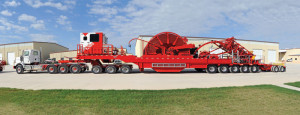
In addition to reducing the friction pressure of fluids, Sanjel is evaluating a class of chemicals that could be added to the fluids to reduce metal-to-metal friction or the mechanical drag. The company is conducting field and lab research to determine which chemicals work best at both surface and downhole conditions, in both fresh water and brine, as well as acids. While most lab tests are done at surface conditions to minimize the number of variables, downhole conditions with increased temperature and the presence of solids often significantly alter the performance of the chemical, making it critical to understand both, Mr McClatchie noted.
“We’ve identified a couple of products that work a lot better than others,” Mr McClatchie noted. In many extended-reach wells, it is difficult to reach the same TD achieved by the drilling rig. “If you have a good metal-to-metal friction reducer, you can get 15% further out in a horizontal section of the well. An intervention into a 10,000-ft horizontal section might get an extra 1,000 to 1,500 ft with smaller-diameter coiled tubing by using the right metal-to-metal friction reducer chemistry.”
NOV is field-testing a new version of its Agitator tool, Neo. It generates pressure pulses downhole to produce axial vibrations, which run the length of the coiled tubing. These vibrations help to break the friction between the coiled tubing and wellbore tubular. As operators request higher pumping rates for fill removal – typically composite plugs and excess fracturing sand in shale plays – the cuttings can be removed more easily. For 2 3/8-in. coiled tubing, flow rates can be as high as 5 bbl/min.
The available Agitators today have limitations in terms of flow rates. “The 2 7/8-in. Agitator is the de facto standard in the industry. It works great, but it has limitations with flow rates,” David Myrick, Product Line Director, Thru Tubing at NOV, said. “When you pump above 3.5 to 4 barrels per minute through the tool, the pressures generated inside can exceed the yield strength of the stator.” The 2 7/8, 3 1/8 and 3 ½-in. Agitator Neos have been designed to handle flow rates up to 5 bbl/min with no time limit on the pumping rates.
The drive mechanism on the Agitator Neo has been upgraded. The current Agitator XP has a power configuration of one lobe on the rotor and two lobes on the stator. The stator is the stationary portion that has an elastomer on the inside with a spiral profile, while the rotor also is spiraled but runs on the inside of the elastomer. “As you pump fluid down the tubing, the fluid acts upon the rotor and causes it to turn. As the rotor turns, it creates pockets of pressure between itself and the elastomer, which allows the rotor to continue turning,” Mr Myrick explained.
The new Agitator Neo power section features a five to six rotor-stator combination, which slows the rotor RPM and allows a higher pumping rate. “It gives us the same performance as the one to two (configuration) at a higher pumping rate,” Mr Myrick said. “High flow rates (above 3 bbl/min) cause the 1 to 2 (configuration) Agitator rotor to turn at a very high speed – approximately 1,200 RPM. Target rotor speeds for proper operation are approximately 500 RPM. Operators wanting to pump higher flow rates was the main driver for developing the Agitator Neo.” Field trials for the Agitator Neo began in Q3 2013 and are expected to wrap up in Q2 2014.
Contingency plan
In the event that the coiled tubing becomes stuck, NOV has developed the bi-directional Bowen TerraForce Jar for high-torsional applications, such as milling. The jar is a mechanical device that stores energy. “The mandrel inside a housing can be pulled back and pushed in, but it sets at a free area in the middle – it floats,” Mr Myrick stated. “The jar is designed so that when you’re pulling really hard with the coiled tubing, the jar starts to be pulled outward. It is restricted by fluids, valves and plates inside. You generate a lot of tension with the coiled tubing, and all of the sudden the jar frees itself from that internal restriction and accelerates to a stopping point inside the jar. It’s like hitting a nail with a hammer.”
The jar is located at the BHA, and the impact is an instantaneous force that is greater than pulling with the coiled tubing alone. “That instantaneous force will, in most cases, jar the fish free from whatever is holding it inside the wellbore.” He noted that the jar is capable of resisting the torsional forces that are generated by the downhole motor due to splines machined along the length of the mandrel and jar housing. The TerraForce is currently available in 2 7/8-in. OD. A smaller version 1 11/16-in. OD TerraForce has been in field trials since early November 2013 in the US.
ACTive is a mark of Schlumberger. Agitator, Bowen and TerraForce are trademarks of National Oilwell Varco.
Click here to watch an exclusive video interview about coiled tubing.
Click here to learn more about the IADC Well Servicing Committee.

